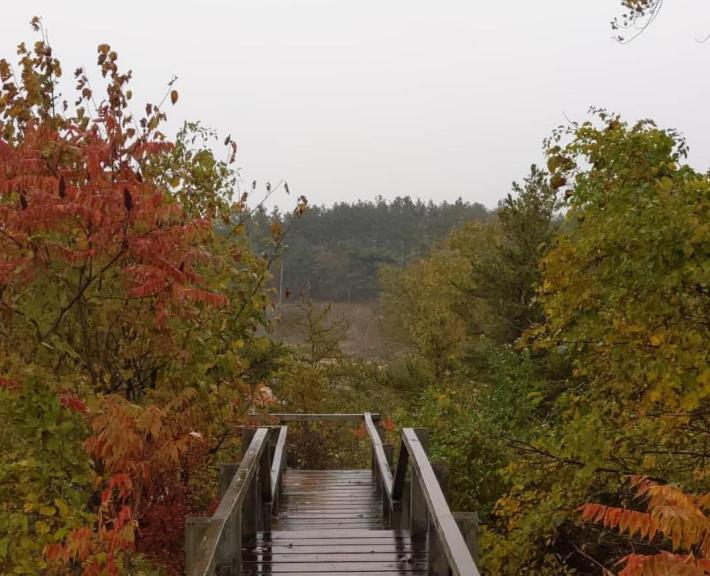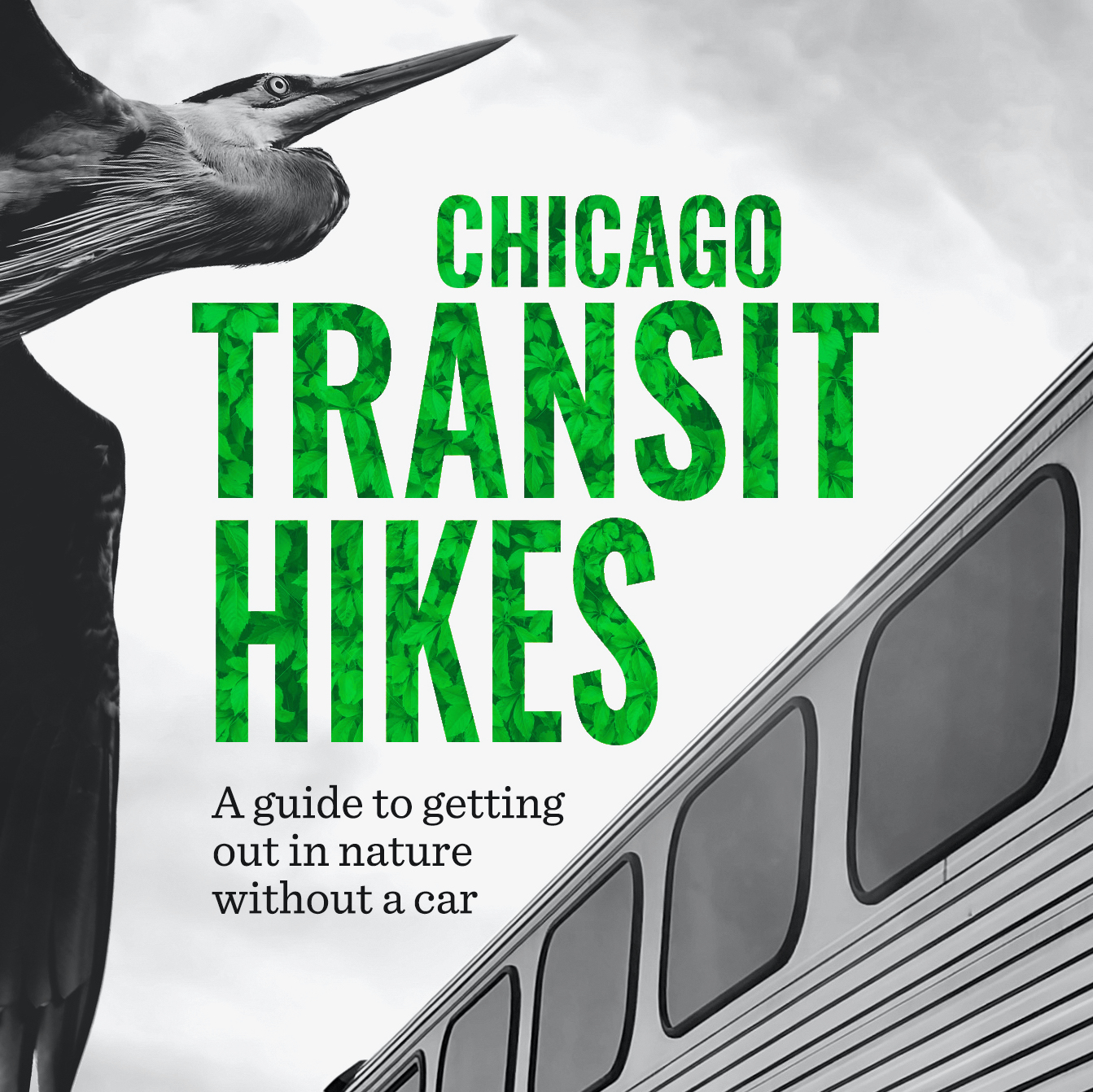It might seem far away right now, but at some point Illinois' Stay at Home order will be lifted, we'll be able to ride transit without worrying about viral exposure, and we'll once again be able to take advantage of Chicago's status as one of the best cities in the country for accessing nature without a car. One reason to be cautiously optimistic is that Governor J.B. Pritzker recently announced Illinois' state parks will be reopening on May 1.
But even before we're out of the woods, epidemiologically speaking, outdoors-loving Chicagoland residents will want to check out Lindsay Welbers’ new guidebook Chicago Transit Hikes: A guide to getting out in nature without a car. It offers eco-friendly alternatives for accessing some surprisingly beautiful natural areas in our region and beyond, including more than 30 hikes. Destinations include:
- Fort Sheridan Nature Preserve
- Frank Bobrytzke Forest and the North Branch Trail
- Deer Grove and Camp Weinberg
- The Joliet Ironworks Historic Site and the I&M Canal
- Indiana Dunes National Park and the Dunewood Campground
If you’re anything like me, the thought of getting behind the wheel of a car to drive hours to a campsite or trailhead is daunting. Especially if you have, well, never owned a vehicle. Welbers' book offers lots of options for folks like us who would much rather relax with a book or a beer on a Metra or South Shore Line train on our way to a forest preserve or park than fight traffic jams on the Kennedy or the Ike. And it's certainly nice to be able to take a short nap on the way home from a strenuous hike.
“All of Chicago has been stuck inside for all of winter," Welbers said. "I think everyone will be very very itchy to go and enjoy nature when [the crisis is over.]... Chicago is this massive glittering city, but there is a ton of green space. It does live up to its nickname ‘City in a Garden.’” Welbers, who grew up in Central Illinois surrounded by beautiful second-growth forest, runs the ultralight camping blog Third Coast Hikes.
I have my doubts that anyone actually enjoys driving in traffic for hours on end to go hiking or camping. Welbers has a highway horror story of her own that motivated her to write Chicago Transit Hikes, but I'll let you read it in the book.
She wanted to create a guide to help people get out of the city by non-noxious means. Sure there’s a bit more planning involved when the CTA, Metra, Pace, or South Shore become part of your journey, but not having to deal with the hassles of driving creates a more pleasant overall experience.
“I am as new to this as anyone else," Wlebers said. "I have a car but I try not to use it. This book came about as a direct result of me trying to figure out how I could go hiking on a bike or train.”
Of course, hiccups happen. Last October, a friend and I took the South Shore out to the Dune Park Station by the Indiana Dunes National Park. We planned to spend the day admiring the changing leaves, but unfortunately our trip was cut short by a frigid downpour. But we couldn't really blame that on the fact we'd taken transit out there. Neither of us had checked the weather until we were on the train -- a bit of poor (pour?) planning on our part.

Welbers includes a list of useful hiking-related apps to download to your phone, as well as a breakdown of basic trail and nature etiquette, such as "leave no trace" practices and tips on preparing for a hike. These includes things like checking the forecast (duh!), and bringing an extra layer for warmth and rain gear -- it's a good idea pack for all types of weather! Prior planning is vital for an enjoyable car-free nature experience. After all, you can’t take refuge in your vehicle.
Welbers paints scenes of serene parks throughout her guide. I felt immersed in the nature and history of each location she describes. Along with itineraries for easy day hikes, Lindsay highlights some outdoor areas for the more adventurous among us.
The further I got through Welbers' guide, the more I found myself wanting to bookmark different parks and recreation areas for different types of trips. Ready for an easy stroll? An invigorating day trip? An overnight backpacking adventure? This guide has the answers to all your questions.
“My goal was that I would make a practical guide book," she said. "I wanted it to be an accessible book for everyone to get outside via transit. If I couldn’t get you home at the end of the night or if there wasn’t a campground, it didn't make it into the book.”
Welbers also includes brief overviews of popular Chicago nature destinations within the city limits, such as the ins and outs of the Lakefront Trail and the Garfield Park Conservatory. These local attractions are great for an afternoon getaway. After all, not every nature outing has to take up your entire day, not in Chicago at least.
“Everybody's idea of an outdoor adventure is wildly different,” Welbers said. “I did my best to include some really easy spaces and an occasional indoor space -- winter in Chicago is long and miserable and we could all enjoy the amenities the city has.”
While we don’t know for sure when the lockdown will end, Welbers' guide will get you excited about taking your next trip. Once we're allowed to do so, many of us will be eager to get out in nature, whether it's an easy stroll with family in the Chicago Botanic Garden, or an overnight trip to the far reaches of Cook County using Metra. If you’ve thought about it, it’ll be in Lindsay’s guide.
Lindsay Welbers’ Chicago Transit Hikes comes out May 15 via Belt Publishing and is available for pre-order here.





